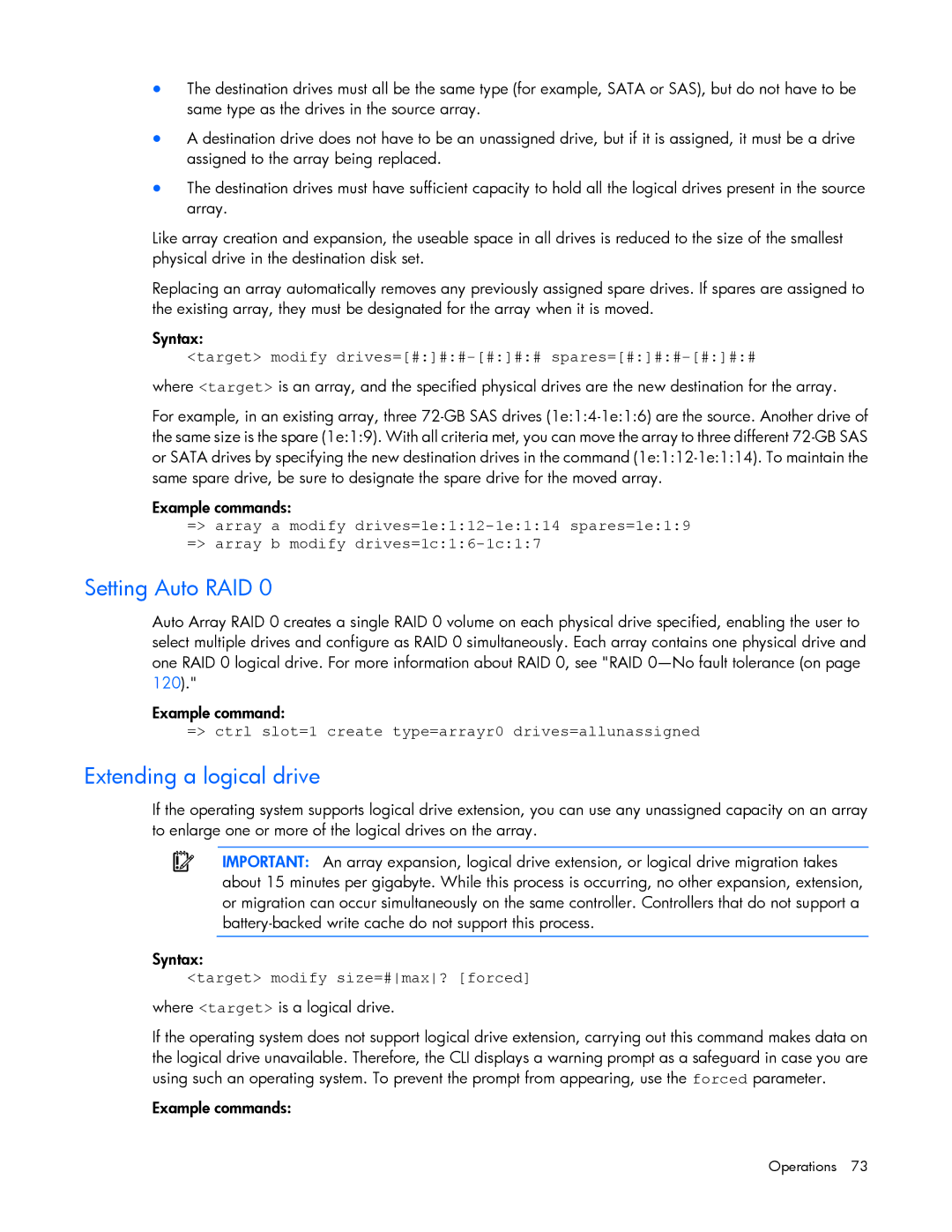
•The destination drives must all be the same type (for example, SATA or SAS), but do not have to be same type as the drives in the source array.
•A destination drive does not have to be an unassigned drive, but if it is assigned, it must be a drive assigned to the array being replaced.
•The destination drives must have sufficient capacity to hold all the logical drives present in the source array.
Like array creation and expansion, the useable space in all drives is reduced to the size of the smallest physical drive in the destination disk set.
Replacing an array automatically removes any previously assigned spare drives. If spares are assigned to the existing array, they must be designated for the array when it is moved.
Syntax:
<target> modify drives=[#:]#:#-[#:]#:# spares=[#:]#:#-[#:]#:#
where <target> is an array, and the specified physical drives are the new destination for the array.
For example, in an existing array, three
Example commands:
=> array a modify
Setting Auto RAID 0
Auto Array RAID 0 creates a single RAID 0 volume on each physical drive specified, enabling the user to select multiple drives and configure as RAID 0 simultaneously. Each array contains one physical drive and one RAID 0 logical drive. For more information about RAID 0, see "RAID
Example command:
=> ctrl slot=1 create type=arrayr0 drives=allunassigned
Extending a logical drive
If the operating system supports logical drive extension, you can use any unassigned capacity on an array to enlarge one or more of the logical drives on the array.
IMPORTANT: An array expansion, logical drive extension, or logical drive migration takes about 15 minutes per gigabyte. While this process is occurring, no other expansion, extension, or migration can occur simultaneously on the same controller. Controllers that do not support a
Syntax:
<target> modify size=#max? [forced]
where <target> is a logical drive.
If the operating system does not support logical drive extension, carrying out this command makes data on the logical drive unavailable. Therefore, the CLI displays a warning prompt as a safeguard in case you are using such an operating system. To prevent the prompt from appearing, use the forced parameter.
Example commands:
